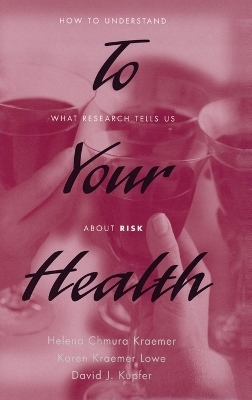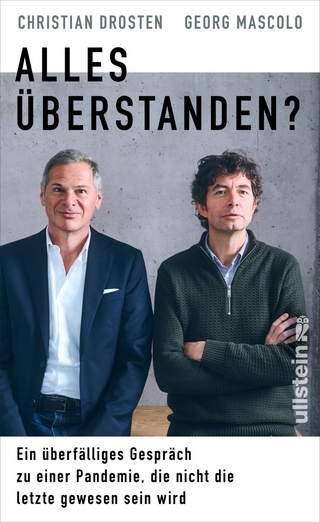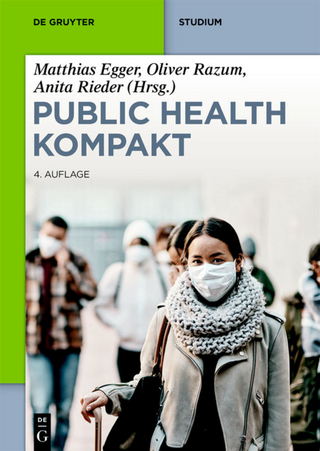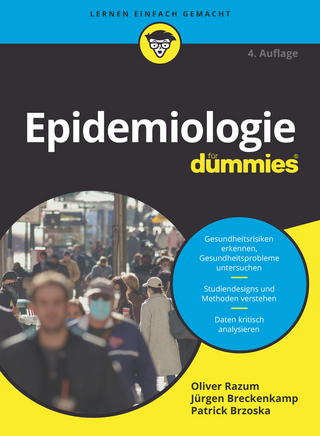
To Your Health
How to Understand What Research Tells Us about Risk
Seiten
2005
Oxford University Press Inc (Verlag)
978-0-19-517870-8 (ISBN)
Oxford University Press Inc (Verlag)
978-0-19-517870-8 (ISBN)
Presents examples from the general media and scientific journals, a guide to a critical reading of research reports. This helpful book was written for informed consumers and physicians as well as for scientists evaluating the risk research literature or contemplating projects on risk research.
The public is bombarded daily with reports about risk factors, many conflicting with each other, other accepted as "scientific truth" for awhile, then scientifically disproved, yet others questionable that later prove to be true. Physicians are faced with trying to make sense of those conflicting or questionable results in the scientific literature in order to guide their patients to the best possible decisions. The situation is not much easier for scientists whom ay waste yers of their productive life, and considerable resources, basing their research efforts on what prove to be misleading earlier research findings. What this book does is to present, in non "academese" and with many examples from the general media and scientific journals, a guide to a critical reading of research reports, which, in turn, serves as a guide to researchers as to which approaches are likely to be regarded with raised eyebrows, and what they need to do to generate results that will be take seriously. This stimulating and helpful book was written for informed consumers and physicians as well as for scientists evaluating the risk research literature or contemplating projects on risk research.
The public is bombarded daily with reports about risk factors, many conflicting with each other, other accepted as "scientific truth" for awhile, then scientifically disproved, yet others questionable that later prove to be true. Physicians are faced with trying to make sense of those conflicting or questionable results in the scientific literature in order to guide their patients to the best possible decisions. The situation is not much easier for scientists whom ay waste yers of their productive life, and considerable resources, basing their research efforts on what prove to be misleading earlier research findings. What this book does is to present, in non "academese" and with many examples from the general media and scientific journals, a guide to a critical reading of research reports, which, in turn, serves as a guide to researchers as to which approaches are likely to be regarded with raised eyebrows, and what they need to do to generate results that will be take seriously. This stimulating and helpful book was written for informed consumers and physicians as well as for scientists evaluating the risk research literature or contemplating projects on risk research.
PART I: THE BASICS OF RISK ; PART II: HOW TO RECOGNIZE GOOD AND BAD RESEARCH ; PART III: CUTTING EDGE APPROACHES ; PART IV: WHERE DO WE GO FROM HERE?
| Erscheint lt. Verlag | 12.5.2005 |
|---|---|
| Zusatzinfo | numerous figures and tables |
| Verlagsort | New York |
| Sprache | englisch |
| Maße | 234 x 160 mm |
| Gewicht | 542 g |
| Themenwelt | Studium ► Querschnittsbereiche ► Epidemiologie / Med. Biometrie |
| ISBN-10 | 0-19-517870-X / 019517870X |
| ISBN-13 | 978-0-19-517870-8 / 9780195178708 |
| Zustand | Neuware |
| Informationen gemäß Produktsicherheitsverordnung (GPSR) | |
| Haben Sie eine Frage zum Produkt? |
Mehr entdecken
aus dem Bereich
aus dem Bereich
ein überfälliges Gespräch zu einer Pandemie, die nicht die letzte …
Buch | Hardcover (2024)
Ullstein Buchverlage
24,99 €


